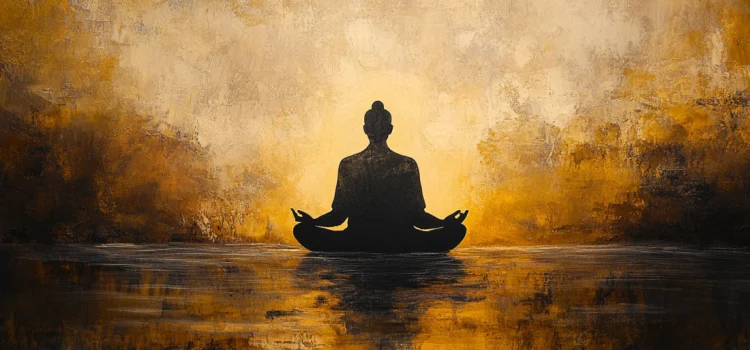
What does “anatta” mean in Buddhism? Does the idea of your “self” even exist?
In Why Buddhism Is True, Robert Wright explains how we view ourselves with the idea of “no-self.” In Buddhism, “anatta” is the claim that what you conventionally think of as your “self” doesn’t have inherent existence.
Let’s dive deeper into this concept to better understand how we perceive ourselves.
A Clouded View Within
Your self—the seemingly distinct person you identify as—is less concrete and permanent than you think. In Buddhism, anatta doesn’t mean you don’t exist at all, though. To clarify, Wright references two Buddhist discourses (the Buddha’s ancient oral teachings).
In the first, the Buddha asks his followers to look for their selves in each of the five aggregates (form, sensation, perception, mental activity, and consciousness), which in Buddhism constitute all of experience. He says that the self must be something permanent but that each of these aspects of experience is transient. Therefore, none of them are the self.
(Shortform note: These ideas on impermanence might reflect a deeper truth about reality itself. In Helgoland, physicist Carlo Rovelli shows how according to quantum mechanics, the same principle persists at nature’s most fundamental level: Nothing has permanent, fixed properties. Even quantum particles exist only through their changing interactions with other particles. Rovelli connects this to Buddhist philosopher Nāgārjuna’s idea that everything is “empty” of inherent existence (which we’ll discuss shortly). The fact that some ancient Buddhist analyses and modern physicists agree about impermanence suggests that it’s a feature not just of the five aggregates, but of everything.)
In the other discourse, Wright says, the Buddha uses the analogy of a king and his kingdom. Saying that the self must be something in your control, he points out that you don’t control your experience the way a king controls his kingdom: You can’t pick and choose your feelings, sensations, or the activities of any of the five aggregates. Therefore, your self can’t be found in them.
Wright affirms this reasoning, saying that from a common sense point of view, it makes sense that the self should be something permanent and in control. The takeaway is that in the Buddhist view, your “self” can’t be found in any aspect of your experience. And in believing that we are such selves, we see unclearly.
(Shortform note: The goal of realizing no-self comes from Hinayana, an early variety of Buddhism that sees life as suffering and encourages detaching from experience to avoid reincarnation into that reality. But this isn’t the only kind of Buddhism—there are multiple paths, or yanas, each with their own views, methods, and goals. For instance, those who follow Vajrayana Buddhism aim not to realize no-self, but to enhance and expand their experience of being a self. Vajrayana sees the lack of control expressed in the above discourse not as evidence that the self is an illusion, but as an invitation to engage more fluidly with experience. In turn, Vajrayana practitioners use meditation methods that develop their ability to live fully in the world.)






